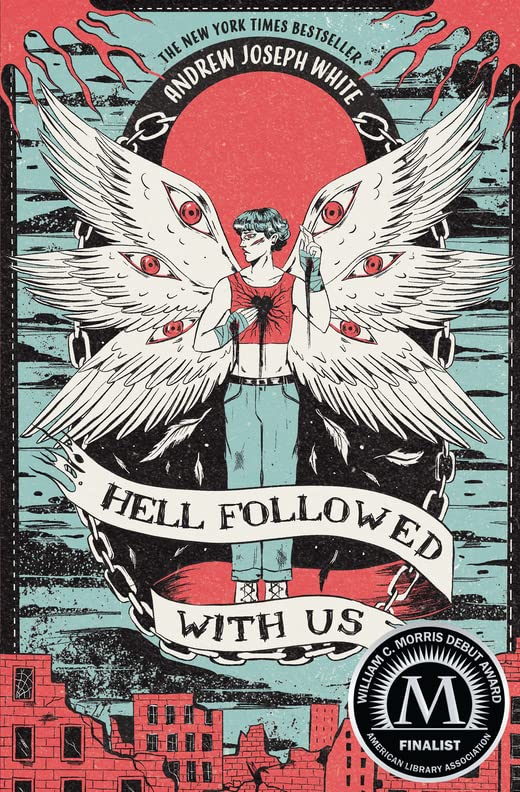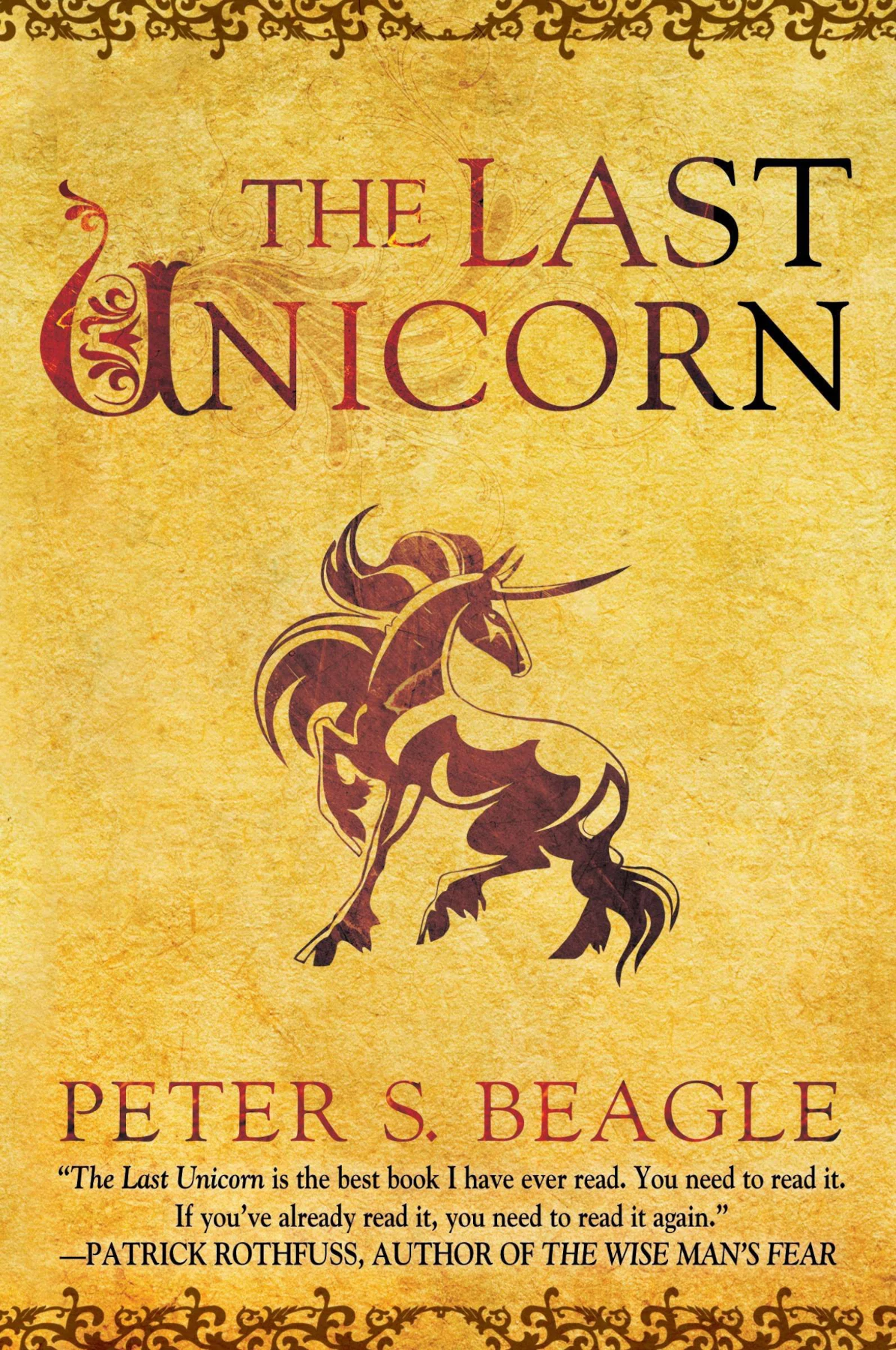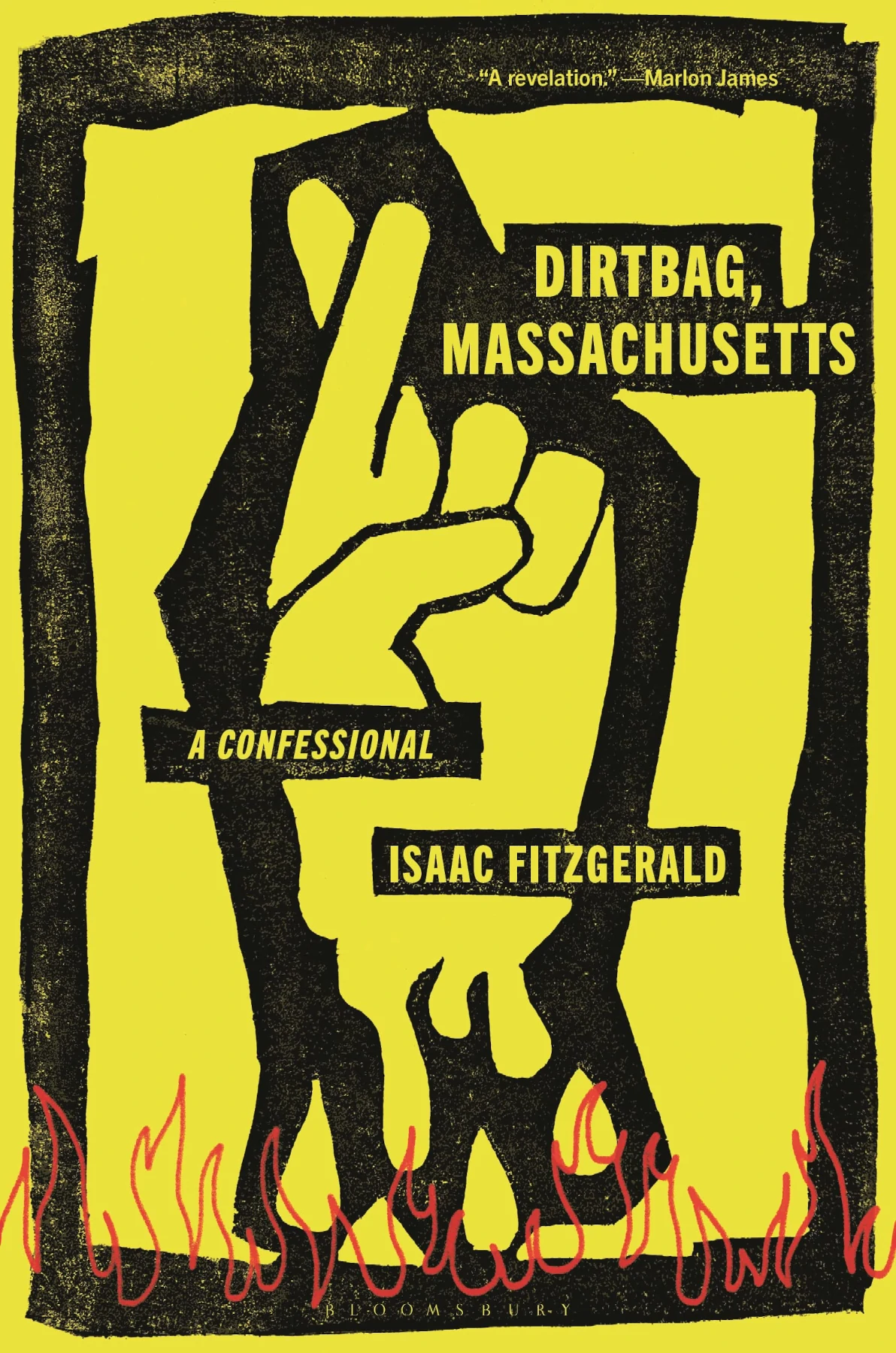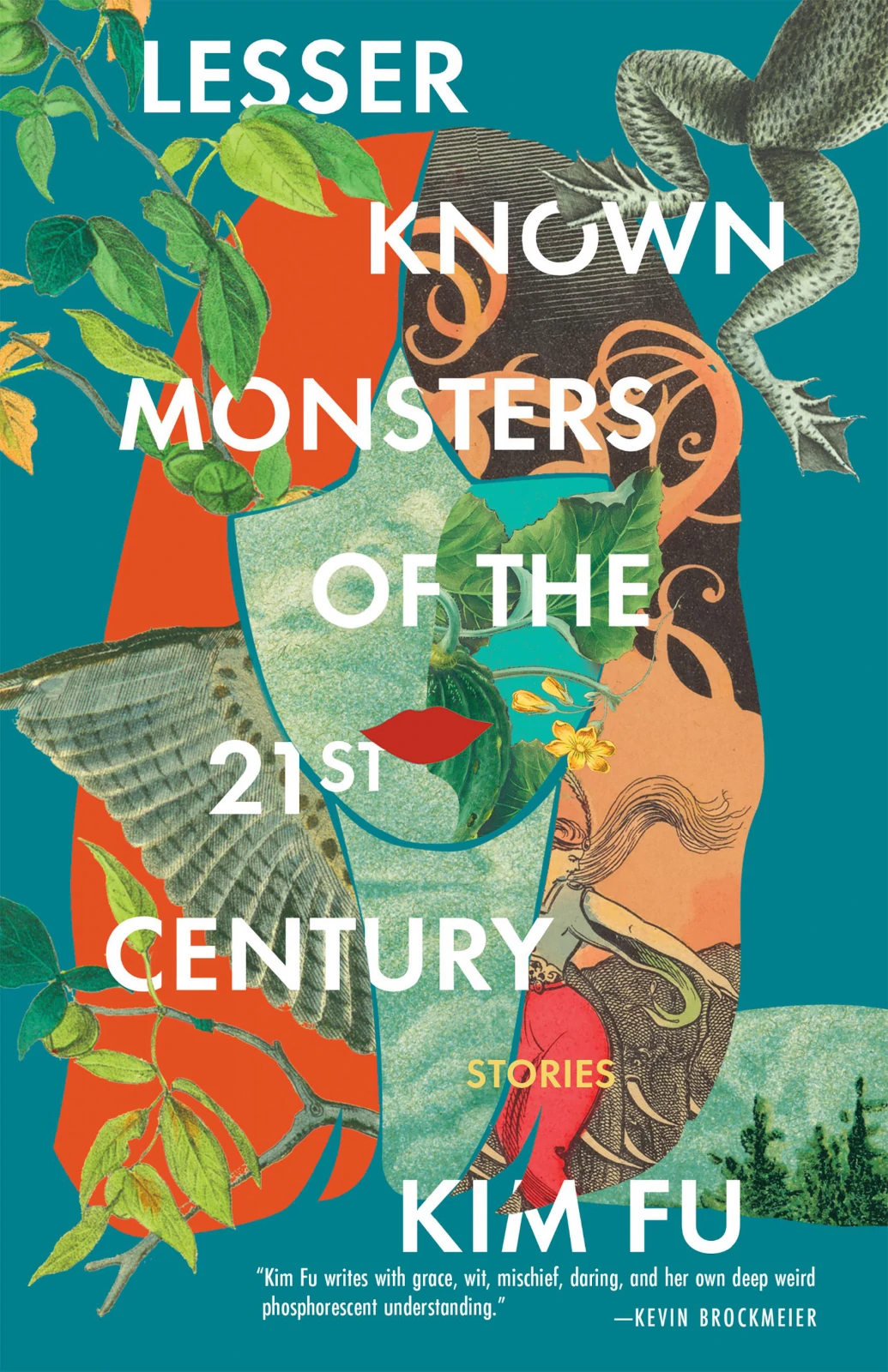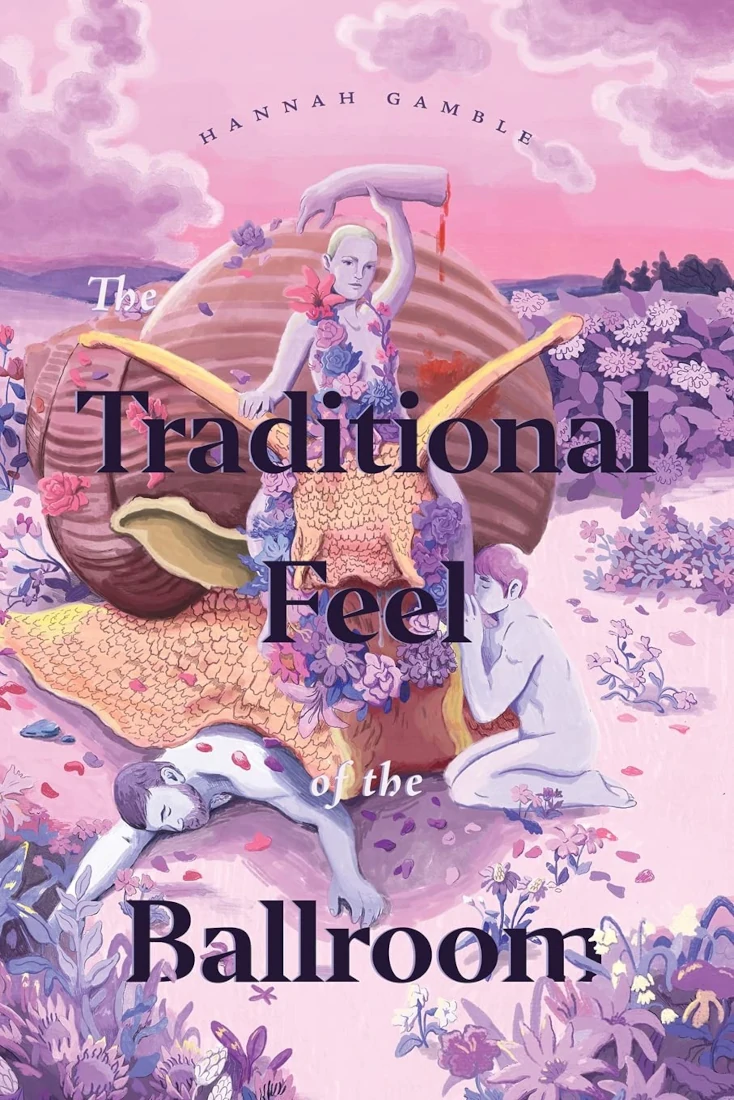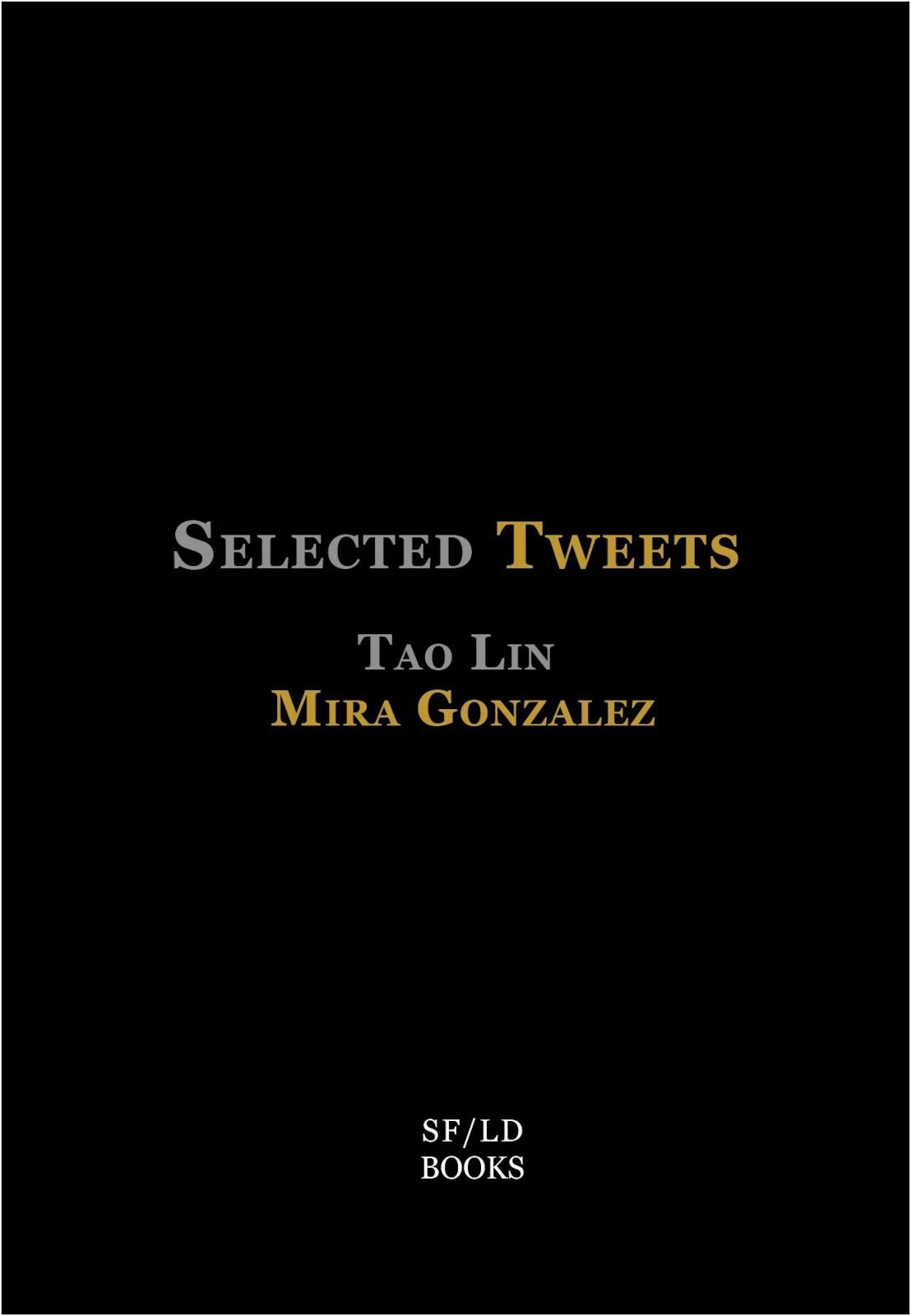F(r)iction contributor Dominic Loise talked with psychotherapist Peter Andrew Danzig, LSW, MSS, CTP (they/them), who wrote about The Last Unicorn for Psychology Today. They talk about geek therapy, the film, and the words & work of Peter S. Beagle, which have gone on to inspire generations through the book & film releases of The Last Unicorn.
As we celebrate The Last Unicorn film’s 40th anniversary, we want to go more in-depth with you about the film, its imagery, and its connections to geek therapy. In the opening image of The Last Unicorn, we see predators and prey living together in The Unicorn’s domain, yet the story is about The Unicorn leaving the comforts of her forest to find out what happened to the other unicorns. What does the film say about finding self and a community?
I think it took a long time for that film to really sit in for me when considering what it means to have community. For a long time, I just thought The Unicorn was searching for the other unicorns. In writing the article for Psychology Today, I was shocked when Peter S. Beagle’s team reached out and said, “This is how I feel.” The Unicorn is special in her forest in that she’s the last, but she has a belief that there are others like her, so there’s always a false sense of knowing for her. For me, the really interesting navigation of community is when she recognizes, “Oh, I haven’t seen a sense of others like me. I haven’t seen and felt this connection.” I think along the way, she gains a sense of community through the characters that she fosters relationships with, like Schmendrick and Molly Grue, and even relationships she fears, like King Haggard and the Red Bull.
The community is not only the unicorns that look just like her, but the people that she built relationships with and the world that she shares. For my own sense of community and understanding of queer culture—but I think this goes for anybody—that has always been the psychological underpinning. It’s not always those you meet along the way that share your intersections, in this case other unicorns, but also the people that are allies—those that see you, believe in you, hope for the best for you, and will go along the journey with you.
One of the first dangers The Unicorn faces is being captured and put on display by the witch Mommy Fortuna. Since “man cannot see unicorns,” the witch needs to use a cheap carnival trick for paying customers to see a real unicorn at her circus of illusions. What does it say about the circus attendees not being able to see a real unicorn considering that “Mommy Fortuna’s illusions work on whoever is eager to believe whatever comes easiest”?
I just have to say how excited I am that we are using the lines from the film. For those who don’t know, Peter S. Beagle was heavily invested in that script and ensuring that it really mimicked the book. I love the line “it takes a cheap carnival trick to have people see a real unicorn.” People don’t always want to see what’s right in front of them. They want to see a version of it. I was never quite sure if that was a metaphor, because Peter follows a lot of that traditional imagery of a unicorn coming to a young maiden at their purest time, so they are visible. So I was always curious what made The Unicorn not visible. I found that there could have been a metaphor there in that she’s not visible to herself. I know that the horn put on by Mommy Fortuna is literal, but I’ve always wondered if Peter is just a very unique writer and has provided some commentary about what The Unicorn doesn’t see in herself. As far as the audience, I think that we see difference and we put it into cages, in a safe place that is away from us. That difference can be beautiful and magical and affirming like a unicorn, and that difference can also be incredibly volatile and quite fearful.
This is evident with the harpy, Celaeno. I always loved that juxtaposition because I don’t know that the harpy is evil. The harpy is just a mythical creature like any other wild animal, and The Unicorn infers, in my opinion, “You should not keep such power in that cage.” So there was this duality of how all the audience members have literal bars between them, and the metaphor is that you’re only seeing what you want to see, but there’s no ability to interact with it. There’s no ability for intimacy or connection. The carnival strips The Unicorn and the fake horn strips her of everything that makes her different and beautiful. It makes her palatable—the horn isn’t very attractive to look at. I think when she sees the image, it’s quite a horrific thing to recognize that that’s the unicorn people see.
The Unicorn is upset that Mommy Fortuna’s customers cannot see her as a real unicorn. Schmendrick the Magician says it’s a “rare person who is taken for who he really is.” But how should we interpret that line later when Schmendrick the Magician wastes time repeatedly trying to cast the correct spell to free The Unicorn from her cage when he had the key from the guard all along?
I think that is a direct metaphor relating to the question: does Schmendrick really believe in himself? As The Unicorn starts her quest at this part of the journey, she’s already captured. If a unicorn—this mystical, undying beast—can get captured, I think that shows a duality between her and Schmendrick. I think they both have abilities. I’ve often wondered, with all the grace and power that she had at the end of that film, that she had that agency all along. She could defeat the Red Bull, so I have a hard time believing she can’t defeat that lock and key. But Mommy Fortuna casts a sense that unicorns are not meant, intrinsically, to understand love, regret, or pain; they are to be beings that don’t house those human emotions. For the first time, just as The Unicorn learns other human emotions, she was given a feeling of inferiority.
I think sometimes we have the keys to what we need all along, and we need affirmation. We need to be freed from our cages, but sometimes we cage ourselves. Whether Schmendrick had the magic or the keys it took to let her out, I think both of them were navigating having this gift and not knowing how to use it. You have a unicorn caged and a magician who can barely use his magic, but the keys are right there the whole time. I think that that is the genius of this film. I was always like, “Just open the damn cage. Just open the cage!” It’s rare that people can see their gifts without a degree of arrogance. I don’t think that we live in a society—whether it’s science fiction or otherwise—that promotes difference, people straying from the binary, and people feeling a sense of autonomy in their bodies. There is magic in our world. I really do believe it. Not necessarily the way that it is in The Last Unicorn, but I think human’s ability to communicate—for you and I to talk about these complex emotions—this is magic. I don’t think that we encourage that enough.
Let’s talk about how upset Molly Grue is when she first sees The Unicorn. She meets The Unicorn with “Why did you come now?” instead of when she was a young maiden. Is there a set time in life to see a unicorn?
This is my favorite part of the entire film, when she says, “Why do you come to me now when I am this?” She later says, “Of course it would be the last unicorn in the world that comes to Molly Grue.” I love that part of the film so much because I think there is a part of our lives where we feel a sense of vivacity, a sense of wonder, where anything is possible. The Unicorn—in both the film and the book—sees a fairness in Molly Grue. She sees a purity and a beauty, but Molly Grue has internalized by this point in life that she’s not a young maiden. She takes care of a traveling group of Robinhood-esque wannabees. At this point in age, I would argue that she was probably not virginal. She’s not eased of spirit. Molly Grue is in pain. Molly Grue knows that there is an end to her life. She understands morbidity. She’s human. She has suffered. It always breaks my heart that The Unicorn can see under all that suffering, pain, and psychological distress that there is this pure, magnificent woman. She showcases it throughout the entire film, but I don’t think Molly Grue realizes it until the end when The Unicorn leaves. I think it takes The Unicorn leaving for Molly Grue to have her own agency.
My heart always hurts so much because I relate it to my queer experience, though this can go for people of other intersections and experiences navigating anything from toxic masculinity to race to intersections of ableism. The Unicorn coming to all of us just raises the question of where do we find love? It took me a long time to recognize that I could be loved for all the things that I intrinsically am, not the things that I was taught I have to be. When you find that love, when somebody can see that, I think that’s magic and that’s beautiful. And I think it does cause us pain. When somebody says “I see you. I don’t care. I don’t care about this or this or this. I love you. I see you for who you are. I come to you.” I think it’s the most beautiful, affirming moment in film animation in general. That’s true love. Just unadulterated love in that moment from The Unicorn. I think that’s where she might start to understand.
We find that the other unicorns disappeared due to the obsessions of King Haggard. What does it mean that King Haggard’s throne room looks like a cell? And what is the significance of The Unicorn’s prison of a human form to hide her from The King considering the line, “If you become human enough to cry then no magic can change you back”?
I think it says a lot that King Haggard lives in destitution. He’s let his kingdom fall along with his responsibility and his nobility as a King. He’s stripped himself of anything that would warrant him as kind. He has almost all the unicorns in the world. Even when The Unicorn is in his castle and he knows he has her, he’s still unhappy. He says, “The only time I feel beauty is when I look in the ocean.” His unhappiness raises the question of what happens if you have everything you want, everything in the world? You have every unicorn and all the magic in the world at your fingertips, and you’re still not happy. Where did you go wrong? Where did we as a community make you feel that you needed more and more? He’s insatiable. But I never looked at him truly as the threat. He is the adversary, and he controls the Red Bull to an extent, but I was always mystified by that because I don’t think the Red Bull could easily be controlled. I always thought that maybe the Red Bull was a metaphor for King Haggard or his fiery anger. The line, “If you become human enough to cry then no magic can change you back” appears in the same scene where King Haggard says, “Don’t forget yourself. You’ve forgotten yourself.” He lifts her hair and looks in her eyes and there’s a reflection of him where originally there was no reflection. That’s because The Unicorn hasn’t had experiences. It’s a detriment if The Unicorn discovers true love. The Unicorn is then going to discover sacrifice, and I think King Haggard is counting on that.
Schmendrick is very smart to say, “if you become human enough to cry,” there’s nothing I can do for you. If she becomes human enough to have these experiences, as she does when she loves the prince, she’s going to lose her mission, her advocacy, and her sense of agency. It is a tragic line because it is so forthcoming and foretelling for the rest of the story. In the end, she’s still the last unicorn. Even though they’re all freed, she then wanders her world just as alone, if not lonelier, than when she left the forest because now she knows sacrifice. She will never forget loving a prince, a person she can’t have. There are things in this world that we can’t keep together no matter how much we love them as humans. You’re not in control. For a unicorn, an immortal beast, to struggle with that immortality is also its own beautiful disaster. It’s a violent beauty to me. I look at it as beautiful and incredibly dark, which is I think what the film represents. If a unicorn can learn to love and almost sacrifice saving magic for an entire world, it shows you how dangerous love can be. In a good way.
The film ends with the other unicorns freed and a community of creatures no longer oppressed by King Haggard. The Unicorn returns to her forest but takes with her a part of her time as a human—regret. What does it mean to bring humanity back to a utopia?
I think everyday people with generally good intentions wish for the best. We all hope for this utopian world where maybe we can end suffering. It’s a really hard thing I navigate as I bring therapy and psychology into this framework. It’s why I wrote this article—to explore how I see this movie now as a near forty-year-old queer, Latinx person in a way that I couldn’t quite register my entire life. The Unicorn set her goal and released magic into the world, and she says to Schmendrick later on, “Unicorns are in the world again. No sorrow will live in me with that joy…” She also mentions no unicorn knows regret, but she does. She says, “I thank you for that part, too.” I think she recognized that immortality and magic are not the answers to utopia and that there are other creatures that are going to have experiences for much shorter time than she will as a unicorn.
Nowhere in the film does Peter S. Beagle navigate relationships. They don’t say The Unicorn falls in love with another unicorn and we have a happy ending. The Unicorn may love one person who will die, and who she will outlive, and that is incredibly sad. I think that there is no perfection. The Unicorn got exactly what she asked for: the animals are safe and there are unicorns in the world. But this utopian magic, this world of perfection, is just unrealistic. The Unicorn is quite naïve at the beginning, but part of me wonders if she’s braced herself for future iterations of conflict now that she understands it a little deeper.
You wrote in Psychology Today about the image of The Unicorn facing King Haggard’s Red Bull. Prince Lir says, “Heroes know that things must happen when they must happen.” But it’s not the prince or even Schmendrick’s magic that saves The Unicorn. When Molly Grue asks, “What’s the point of magic if it can’t save a unicorn?”, Schmendrick answers, “That’s the point of heroes.” But isn’t it The Unicorn who saves herself by fighting back against the Red Bull?
“Heroes” is a word that has been floating in my vernacular and resonating with me in my own interpersonal ways and as a theorist on emotions and psychology. What is a hero? Schmendrick the Magician can’t save The Unicorn, and Molly asks, “What if you can?” He says, “That is what heroes are for.” Heroes are people that remind us that we can. The hero tries to show The Unicorn how much he cares for her. He is fallible, human, and imperfect next to a creature that has always been defined as perfection in our vernaculars and our psychology. While The Unicorn is the only one equipped to defeat the Red Bull, she couldn’t do that unless the hero sacrificed himself. That’s what heroes are for. Magic is not sacrifice. Magic is intentional and very controlled, but a hero takes a chance. King Haggard knew that in raising his son. Prince Lir went in front of a Red Bull creature and put his arms out. He didn’t come with a sword or with magic. I find it hard to believe, with his character development, that that hero did not know what he was doing by showing this unicorn—this person for a time that he truly loved—that this is what sacrifice looks like. I need you to take us the rest of the way. I can’t do that for you. That’s what heroes are for, and it is just such a beautiful moment.
At the end, you see The Unicorn come and be teary eyed and give him life back. There’s this great scene where he falls, and they pan over to The Unicorn and her eyes get really wide. It’s the only time that I remember in the film where The Unicorn doesn’t look beautiful even when she’s in distress. Even when she’s running with the Red Bull, she’s in pink colors and it’s beautiful to watch regardless. But her eyes get really wide, and you see this beautiful, kind creature get angry and attack. I think that’s what heroes are for. I think they’re there to remind us not that they can save us, but that maybe we can save ourselves.
Tell us about other projects you have coming up and where we can find you online.
There are quite a few projects coming up. My website is under rehaul right now. I’ve got a couple of articles that will be hitting Psychology Today on various intersections of geek culture. I have a book coming out that is part memoir, part relational experience, meaning shared experiences of a lot of people—mainly self-identified geeks. The working title is Don’t Toy With Me: A Geek’s Guide to Expression and Acceptance. “Don’t Toy With Me” is a play on words. I’m a toy analyst. I like to collect toys and learn the history of how they’re made, how they impact gender or socialization, how they impact society, and what toys are for. The book brings in a little bit of research relating to why we tell people to stop playing and having fun. The book is slated to come out in 2023 through Leyline Publishing and it’s meant for everyone who identifies as a geek. The Last Unicorn chapter will be in there, almost intrinsically throughout. My nod to one of the lines in the book that I can share is, “It takes a village to raise a unicorn.” I talk about how it took a lot of people affirming me over my lifetime to make me feel courageous enough to challenge psychology as a field and to challenge my colleagues in different ways of thinking. If people want to find more information, my website is peterandrewdanzig.com where you can sign up for my mailing list. You can also follow me on Instagram @peterandrewdanziglsw and under my name across all other social media.
